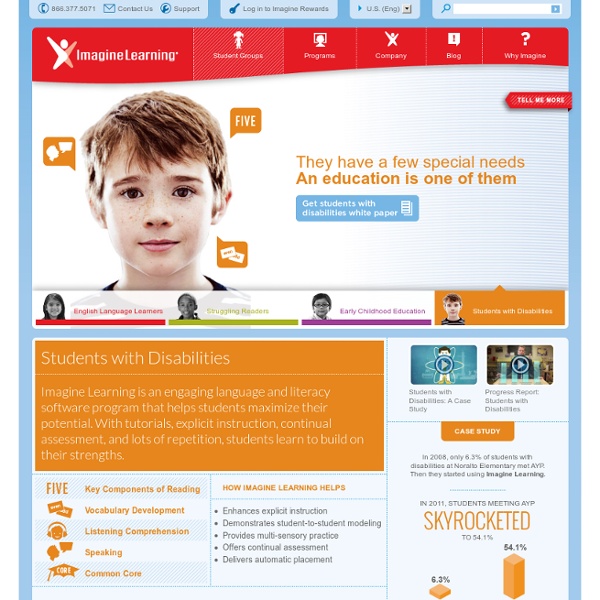Students with Disabilities

ContinYou - Changing lives through learning
MentorMob - Learn What You Want, Teach What You Love - MentorMob
New Tech Network
The Flipped Classroom Model: A Full Picture
Due to Khan Academy’s popularity, the idea of the flipped classroom has gained press and credibility within education circles. Briefly, the Flipped Classroom as described by Jonathan Martin is: Flip your instruction so that students watch and listen to your lectures… for homework, and then use your precious class-time for what previously, often, was done in homework: tackling difficult problems, working in groups, researching, collaborating, crafting and creating. Classrooms become laboratories or studios, and yet content delivery is preserved. A compiled resource page of the Flipped Classroom (with videos and links) can be found at The advantage of the flipped classroom is that the content, often the theoretical/lecture-based component of the lesson, becomes more easily accessed and controlled by the learner. It is important, though, not to be seduced by the messenger. The Flipped Classroom Model Experiential Engagement: The Activity Summary
Instructional Strategies Online
"What children learn depends not only on what they are taught but also how they are taught, their development level, and their interests and experiences.... These beliefs require that much closer attention be paid to the methods chosen for presenting material..." Understanding the Common Essential Learnings, Saskatchewan Education, 1988. (p.10) "The last decades of research in human learning have presented new insights into the ways that learners are active in constructing their own understanding.
A Pedagogical Framework For Digital Tools
As a consequence of society’s digitization it becomes increasingly important to use technology in education, in primary as well as in secondary education. Students must achieve a number of digital literacies and competences that can enable them to succeed in a world where digital tools are a natural part of everyday life. In order to ensure that students acquire the necessary digital literacies and competences, and to ensure that they can critically think, it is important that they are presented with a range of digital tools and gain an understanding of the tools’ capabilities. This places high demands on the teacher. As a teacher it can be difficult to keep up with the new digital opportunities, and it can be hard to assess which digital tools students should be presented to, and in which contexts it is appropriate to use them in education. The framework is based on a distinction between a monological , a dialogical , and a polyphonic form of teaching. The monological form of teaching
Related:
Related:



